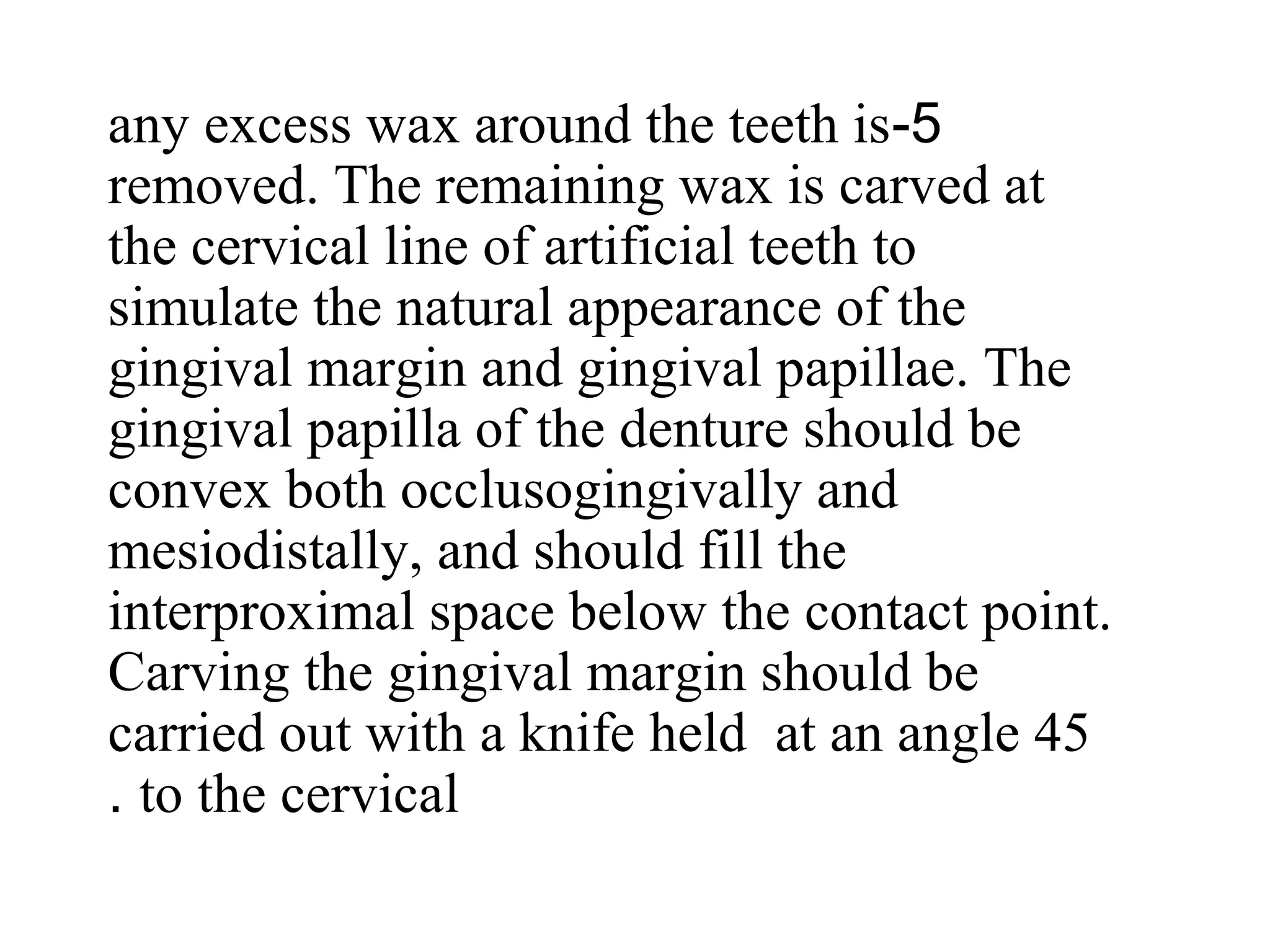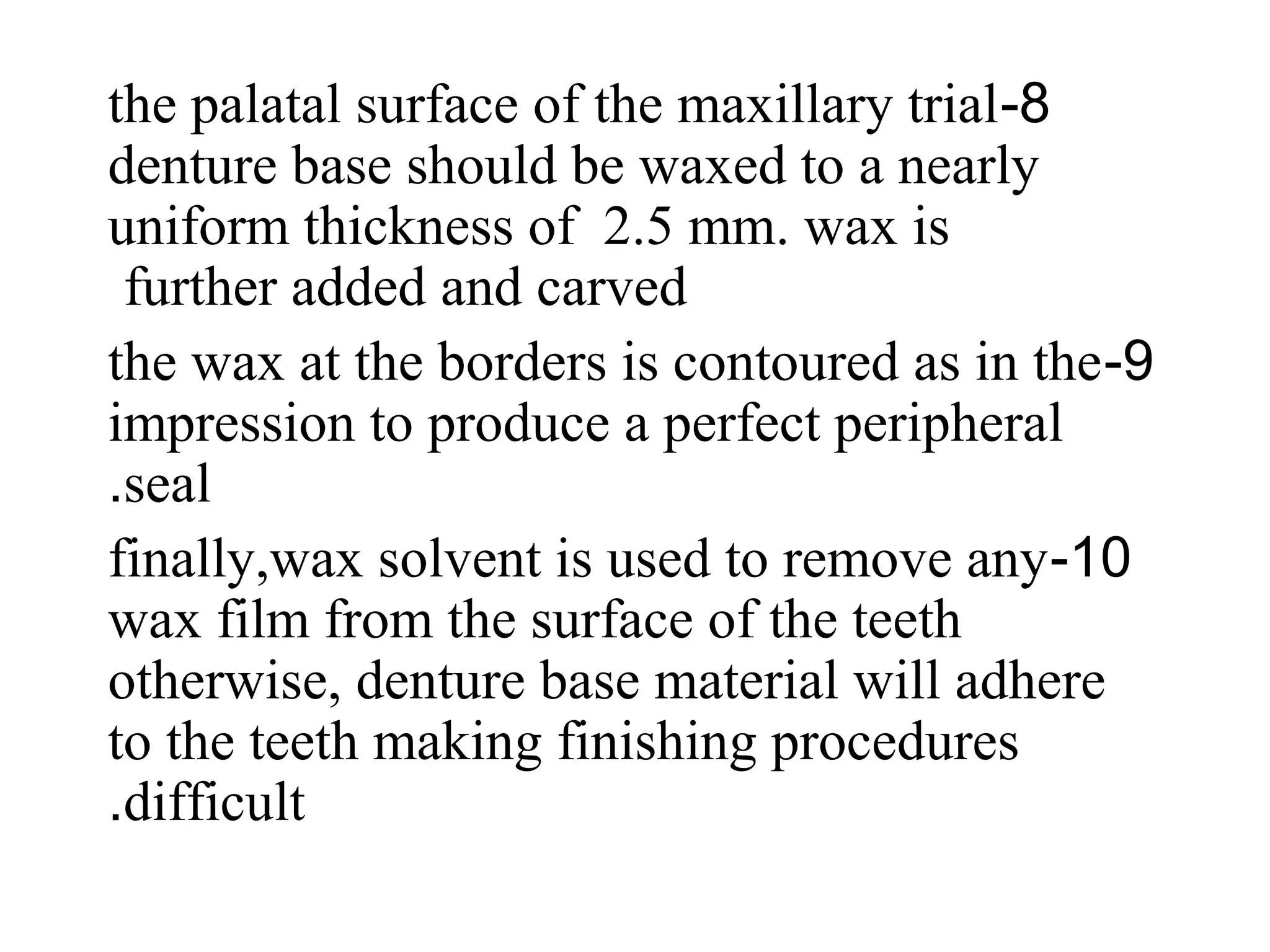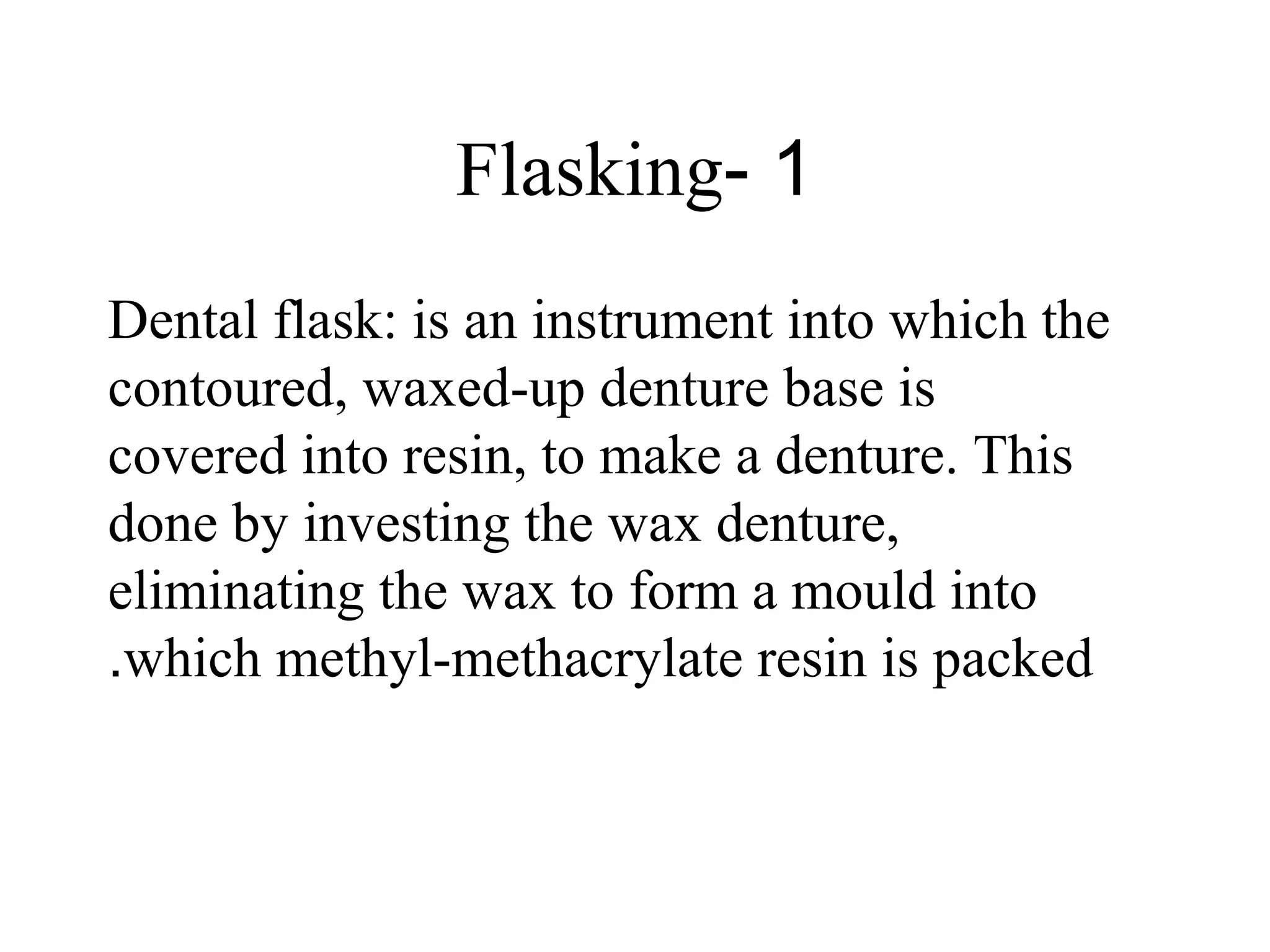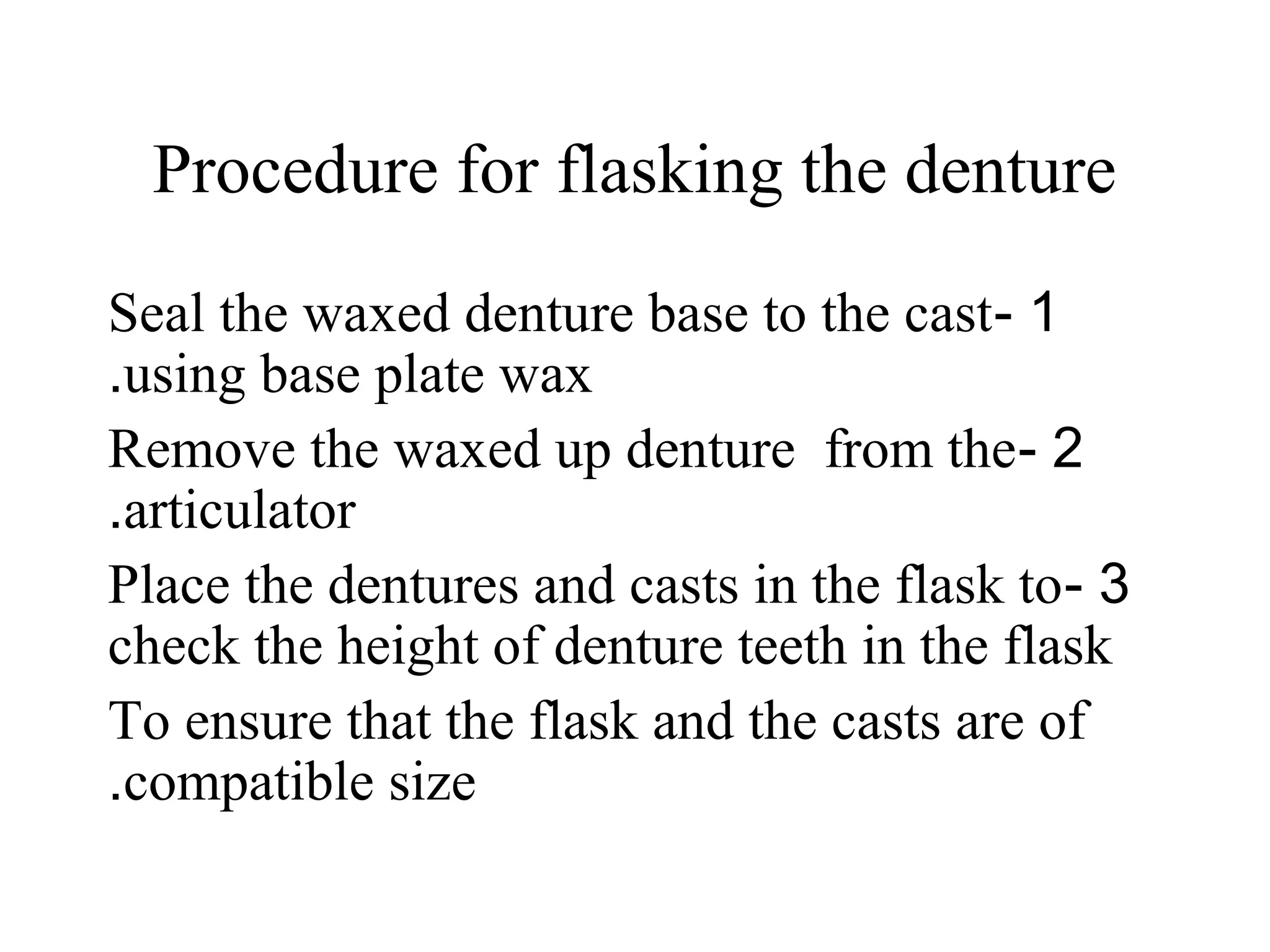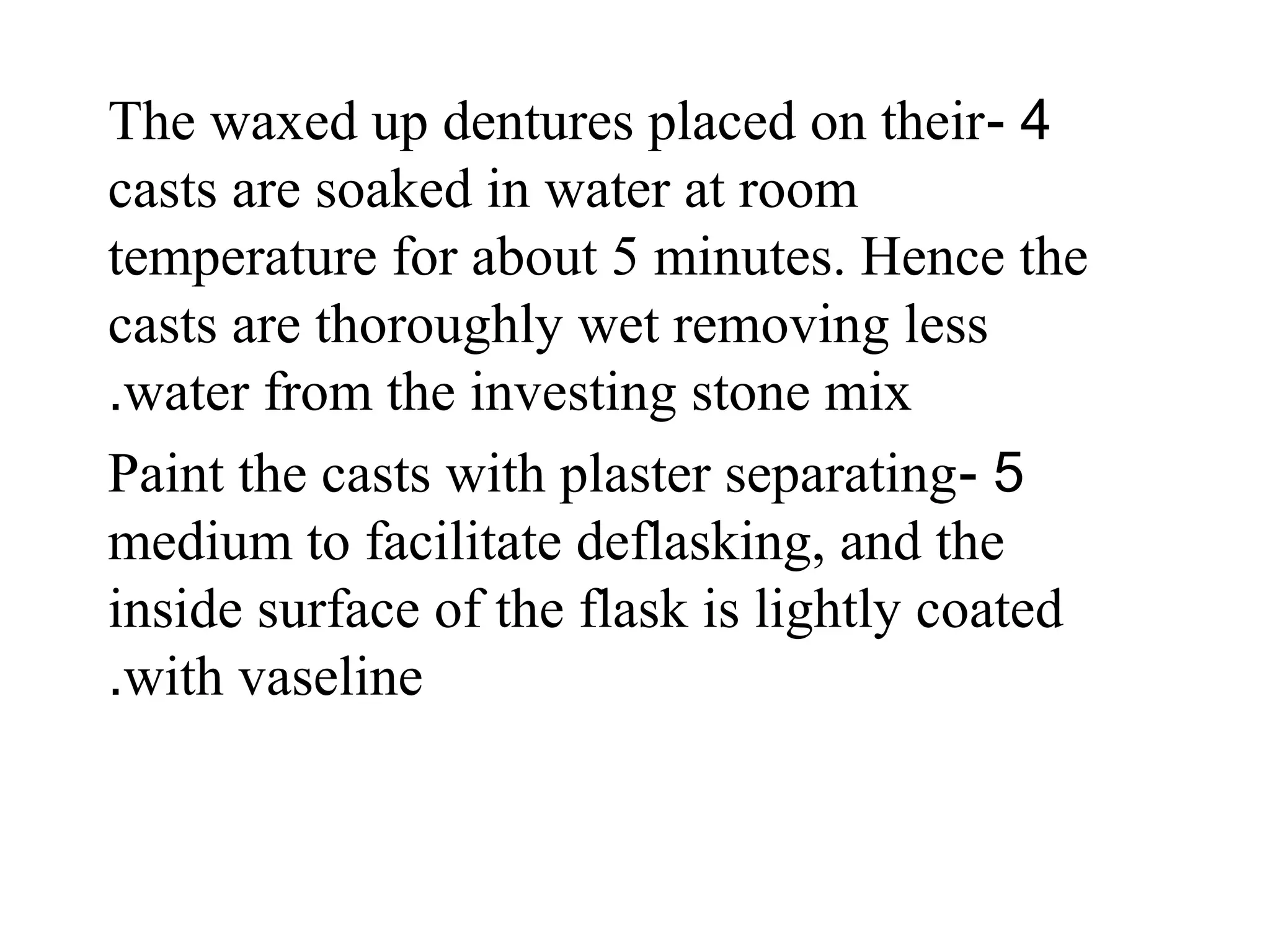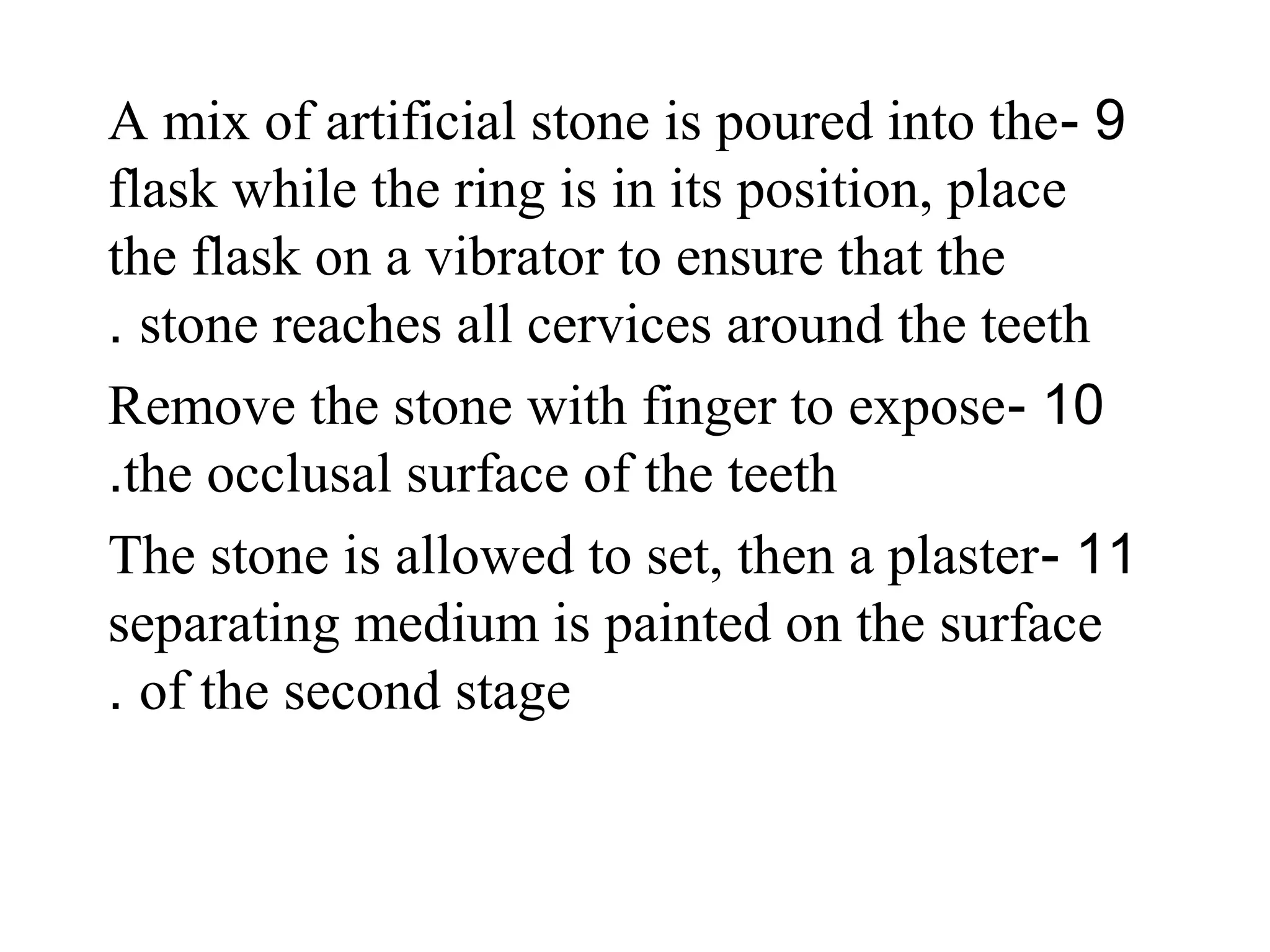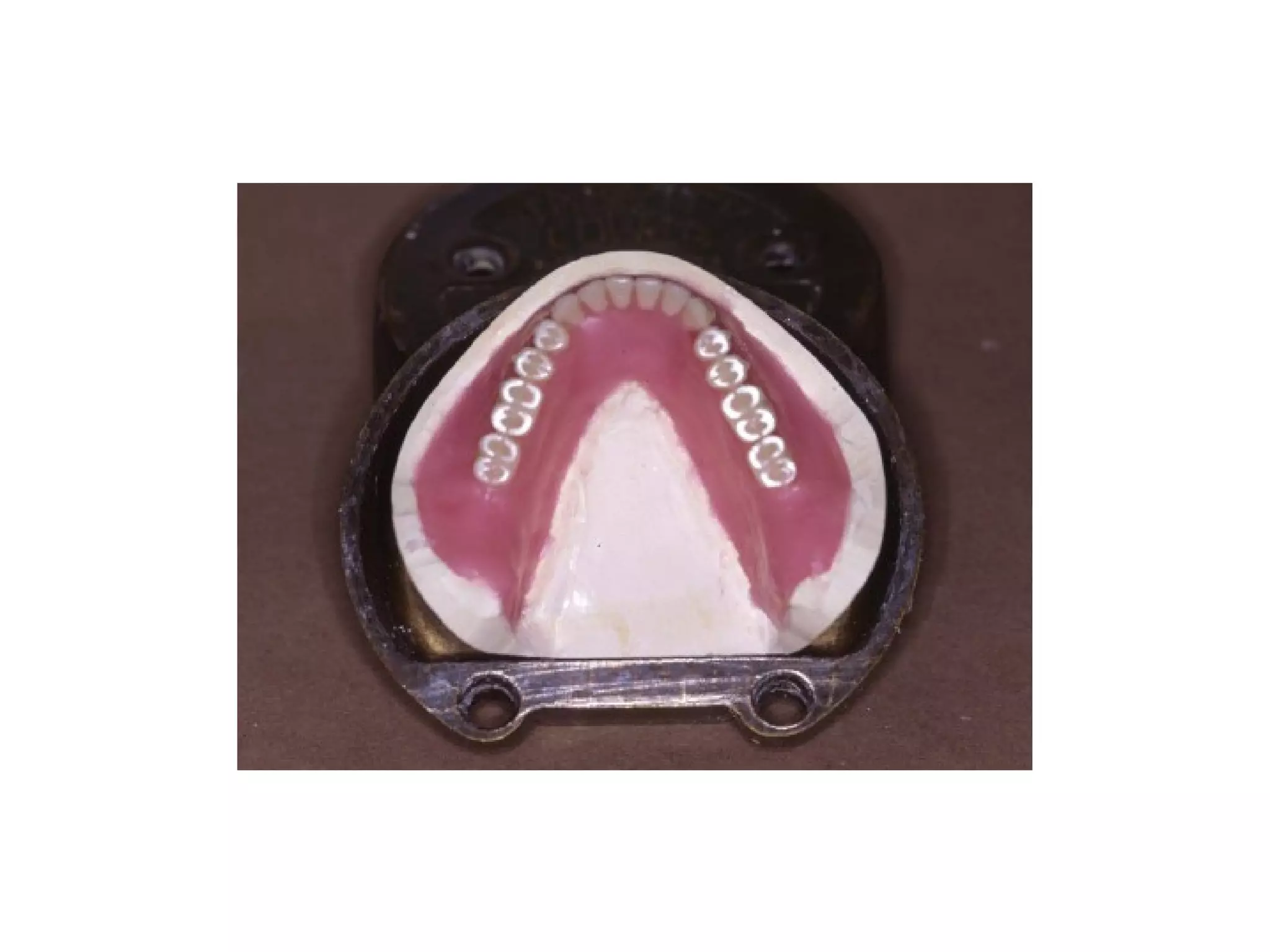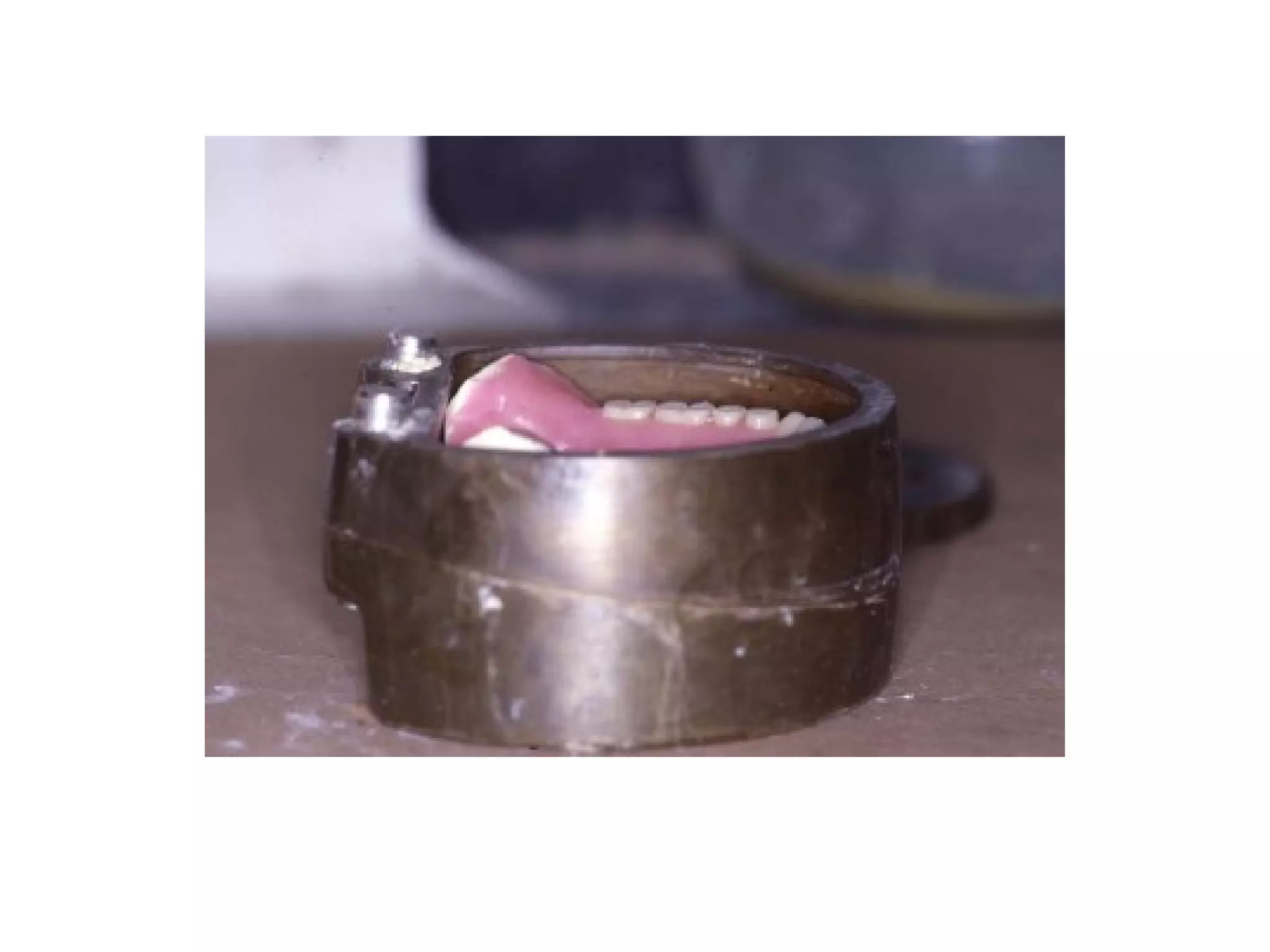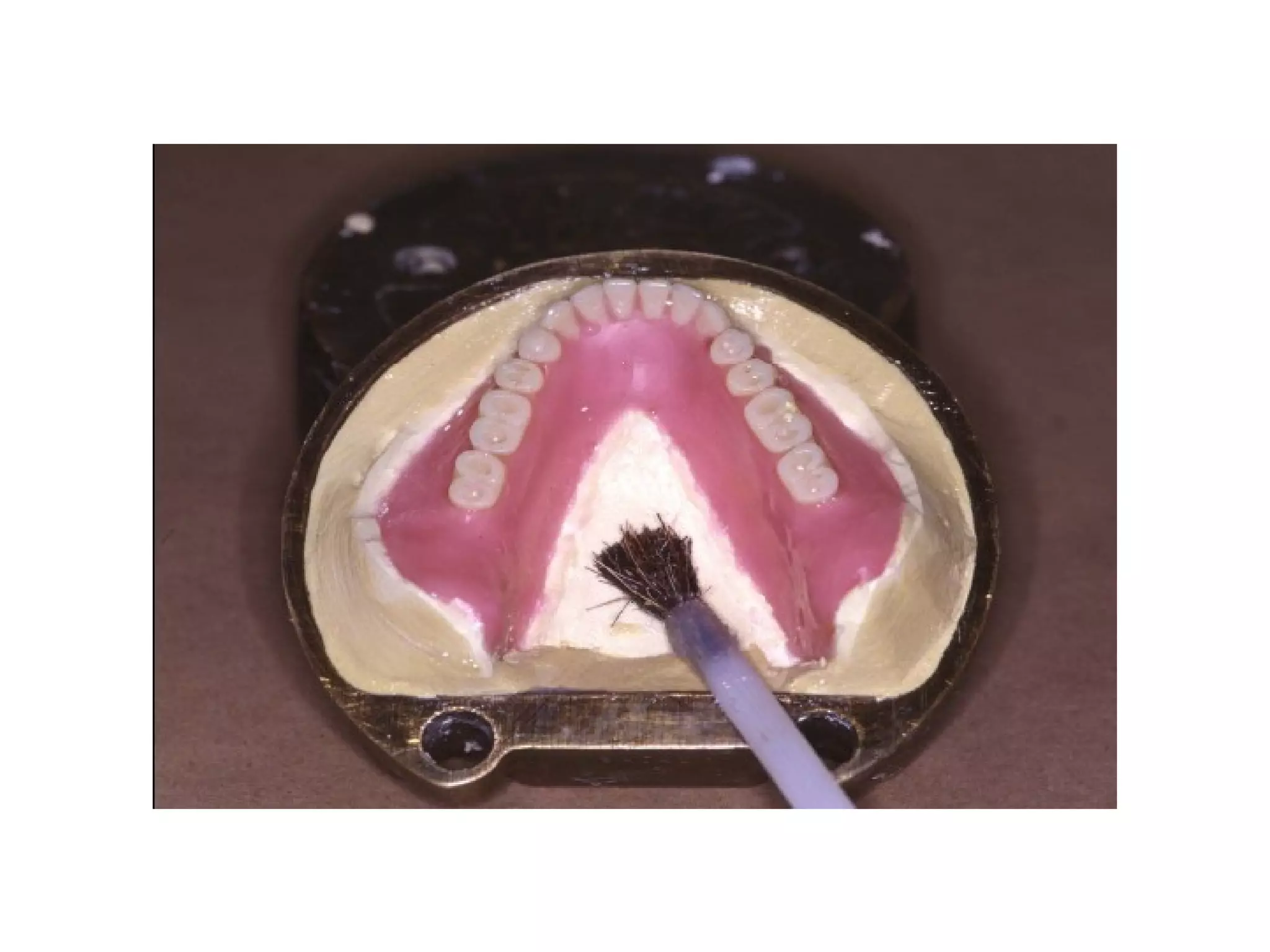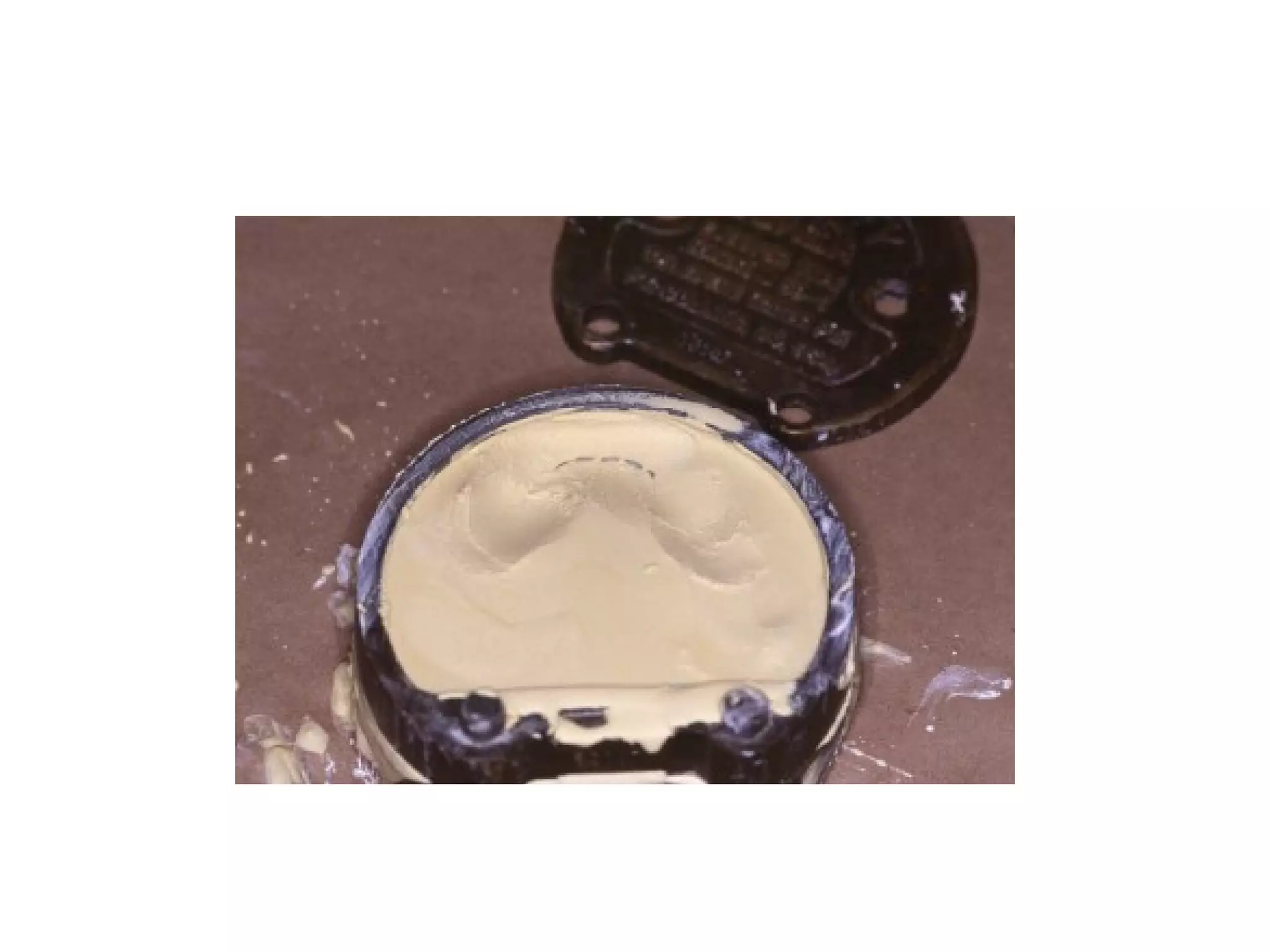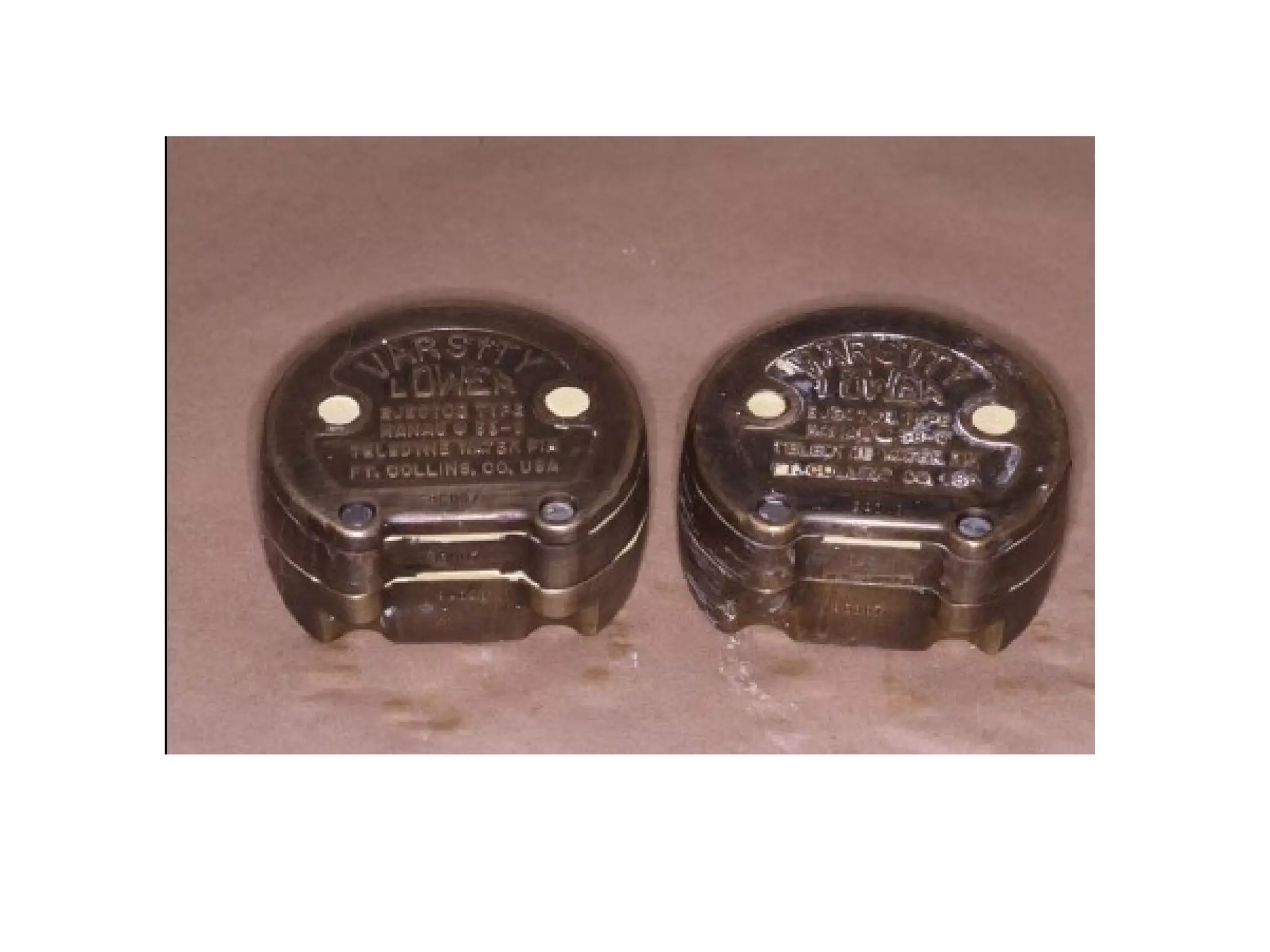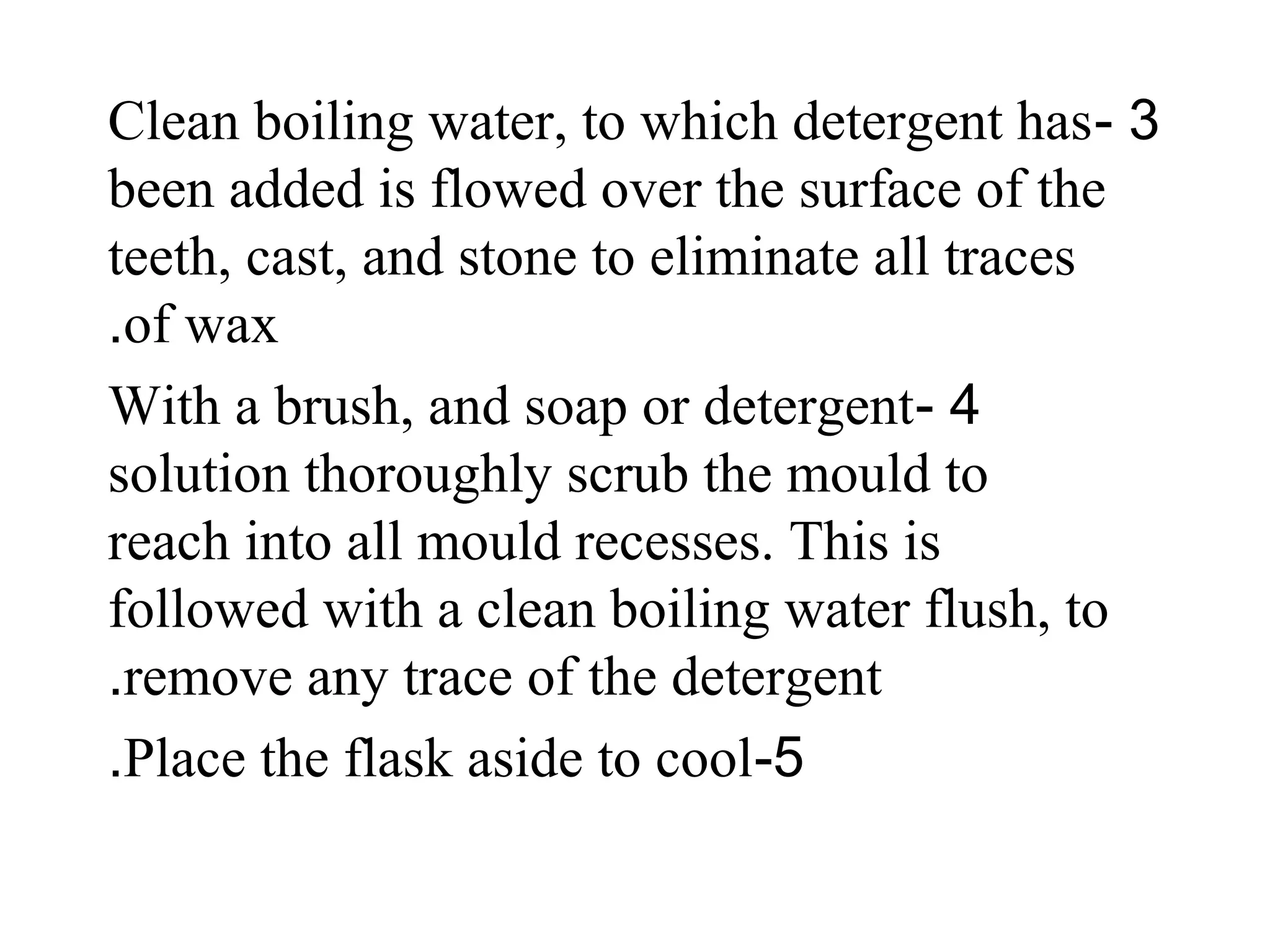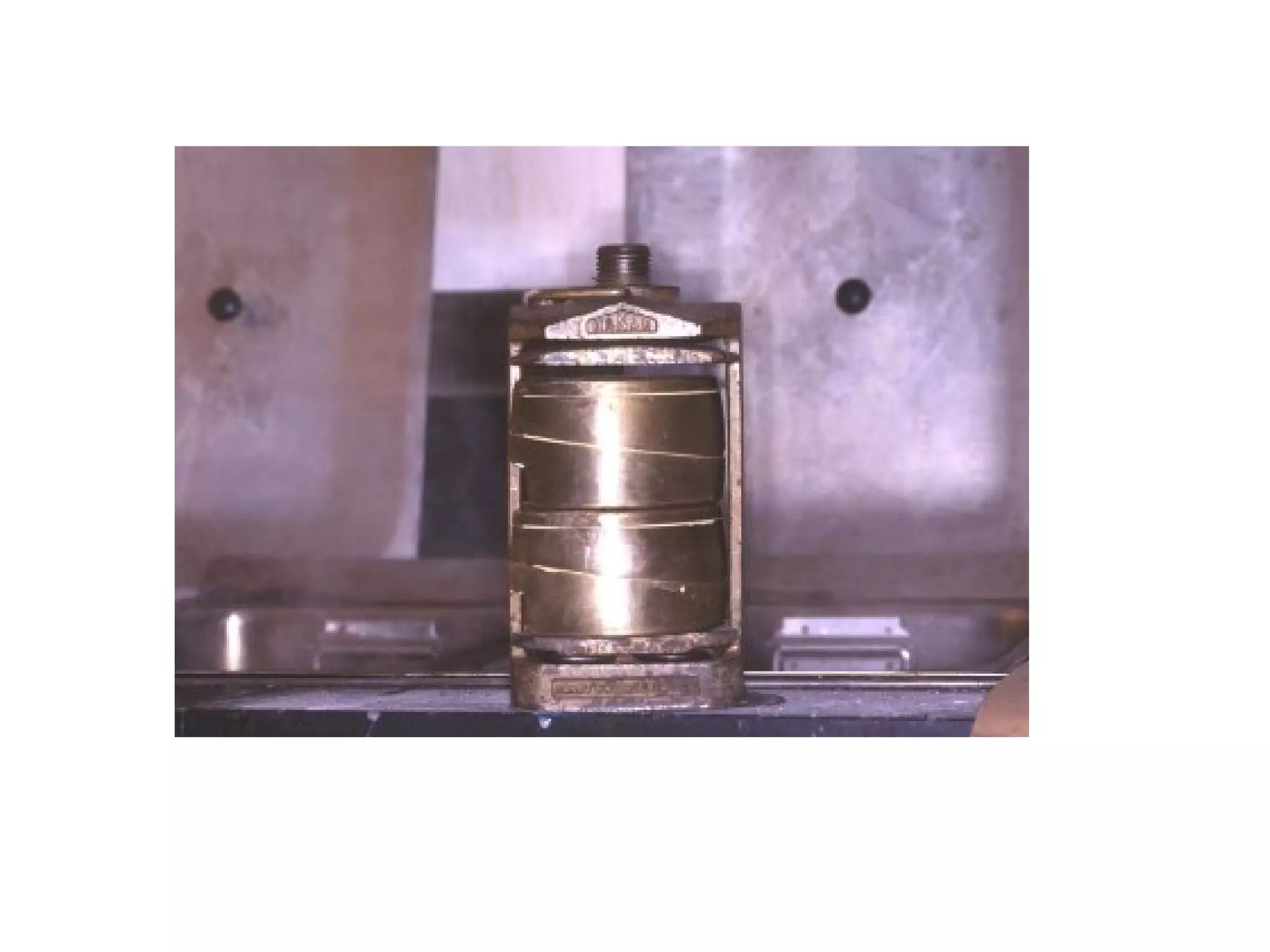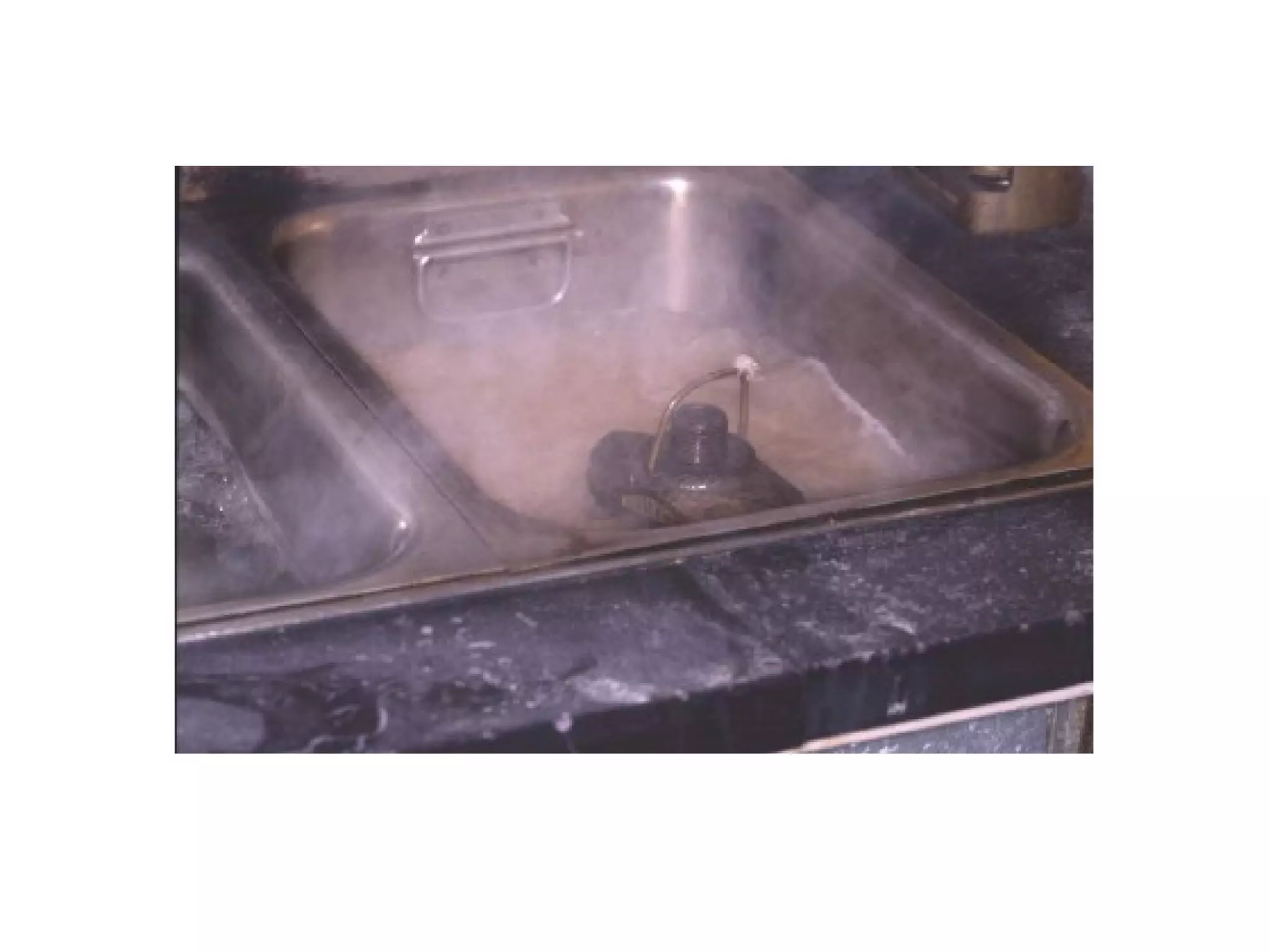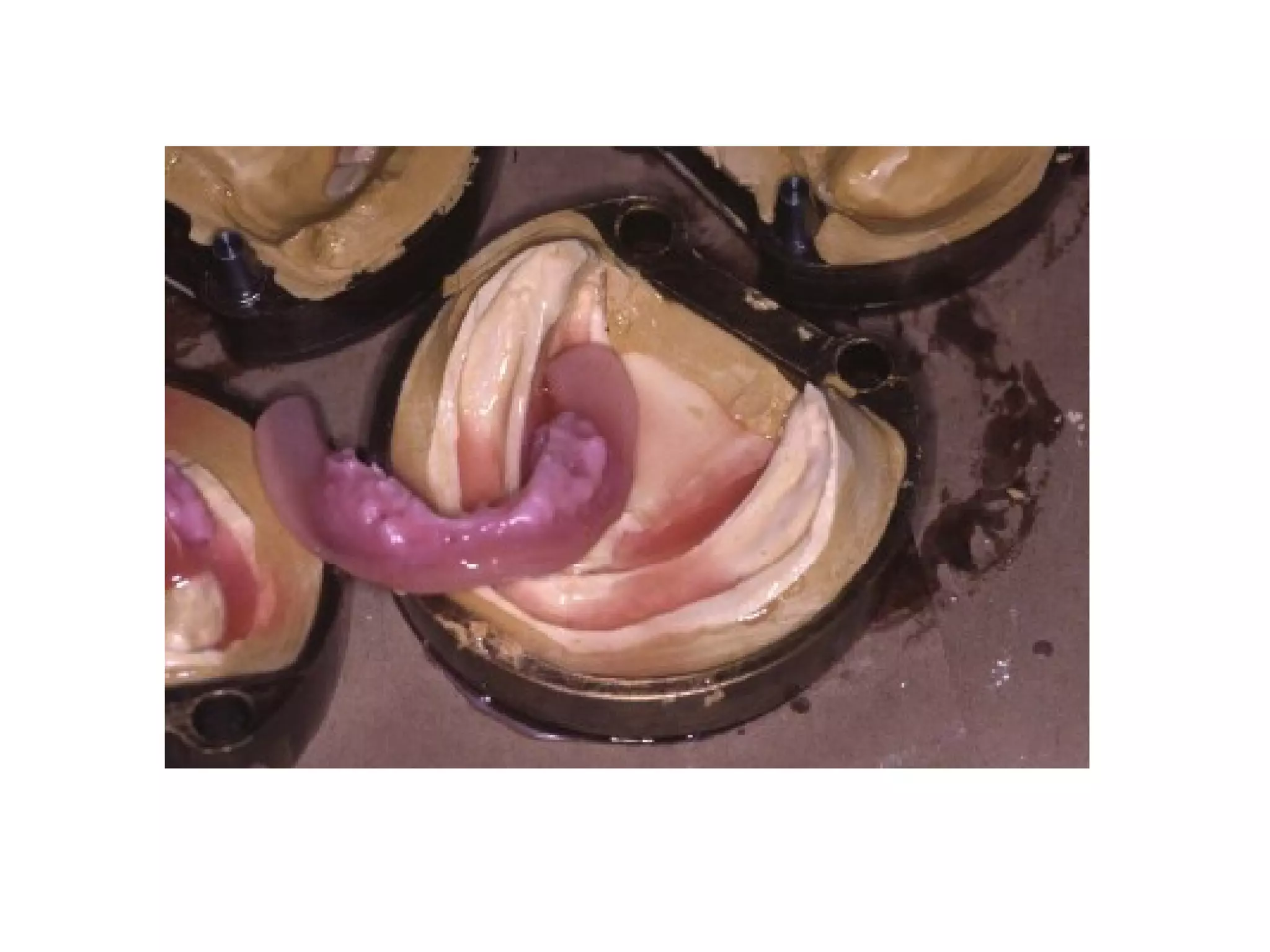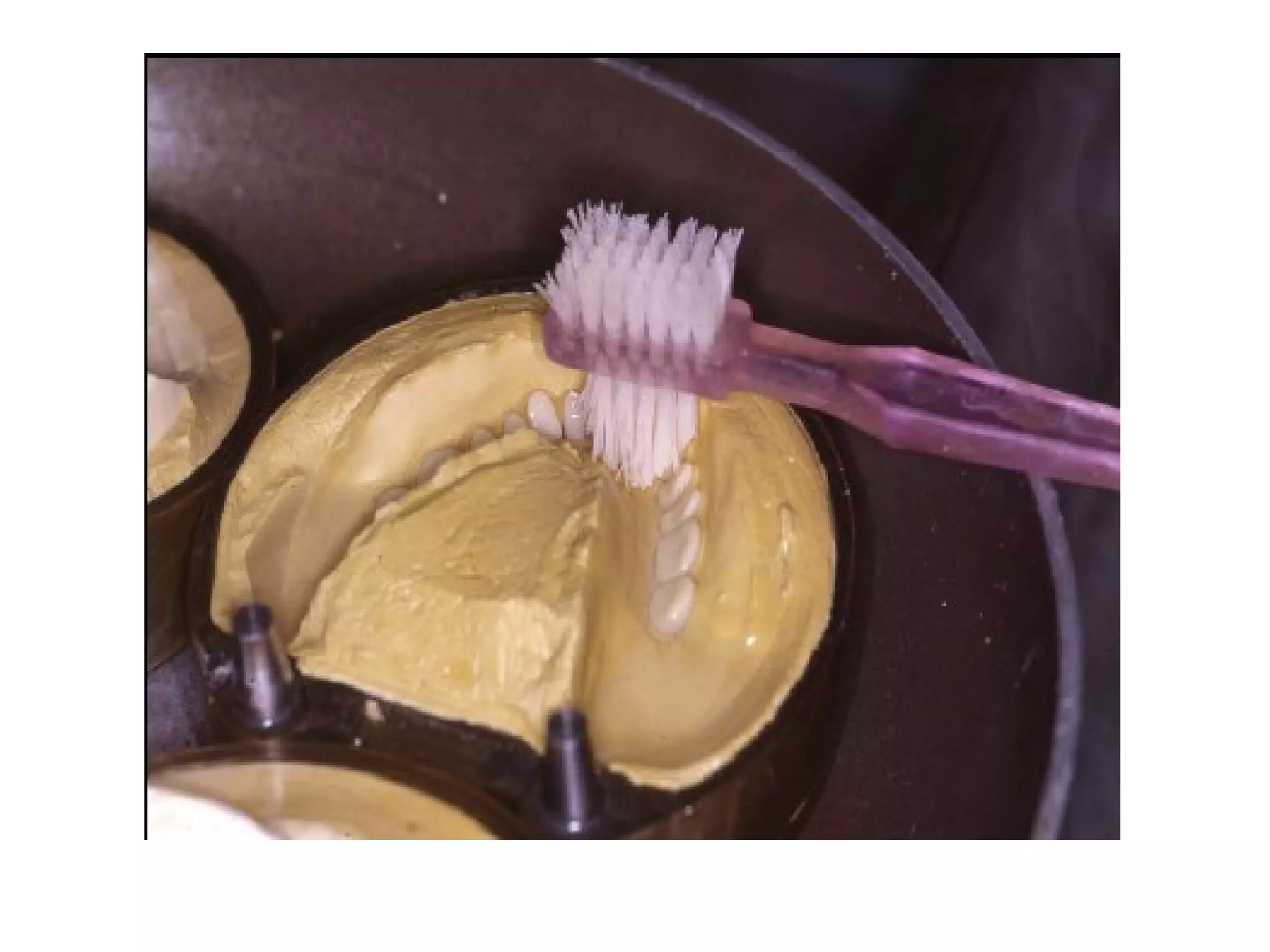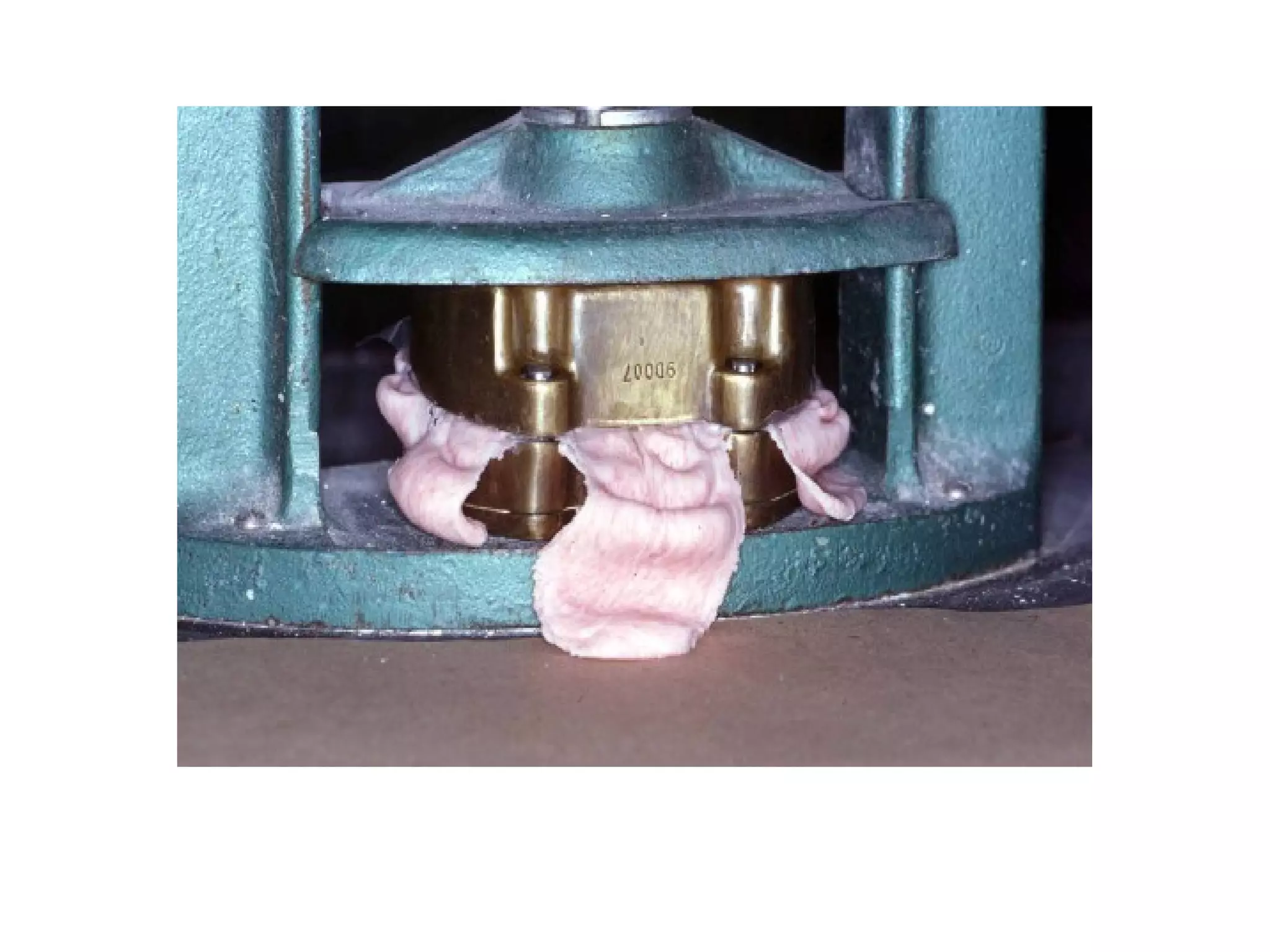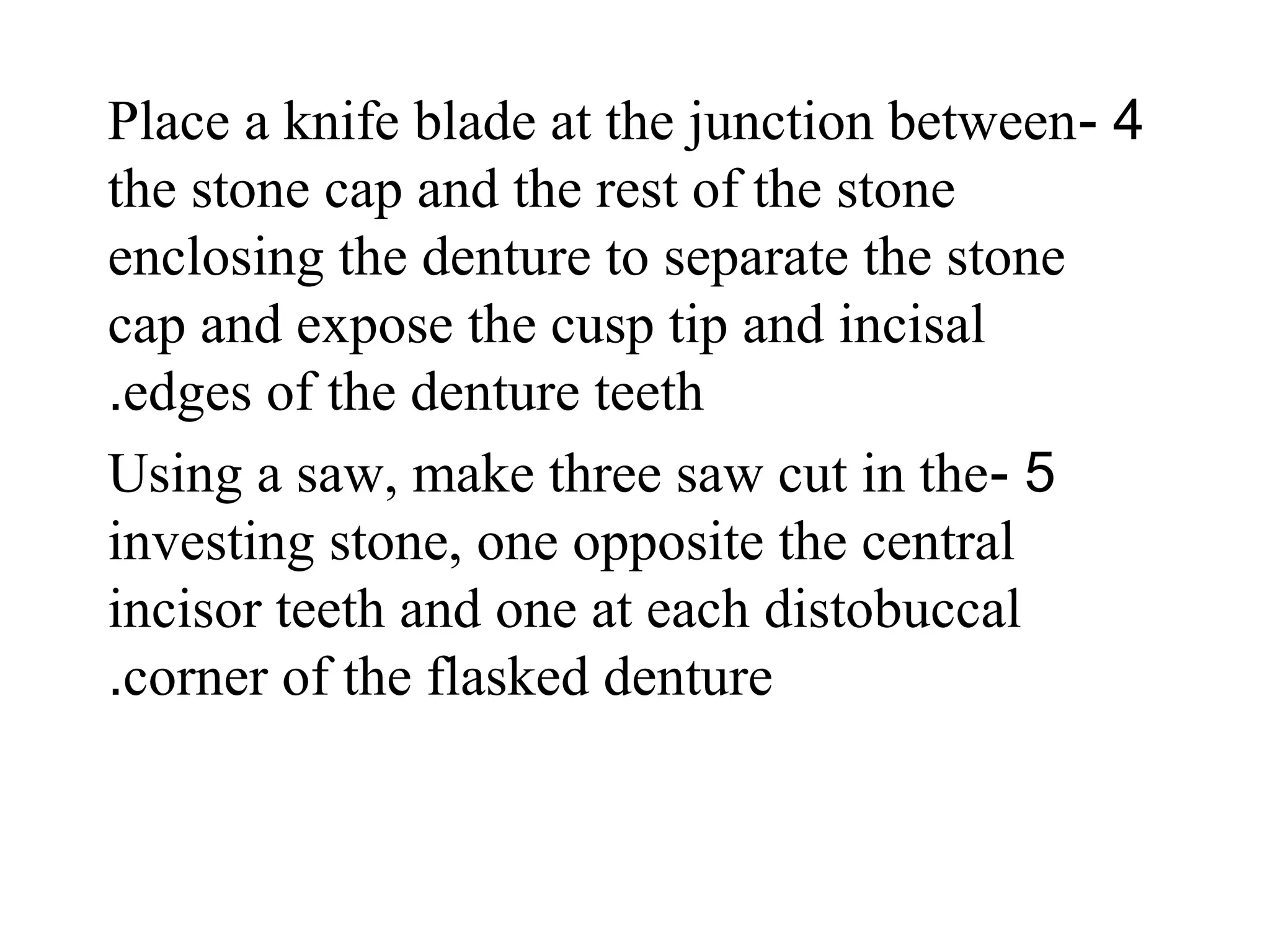This document discusses the process of waxing up a denture. It explains that waxing involves contouring a trial denture base of wax to reproduce the tissues of the mouth. This helps with retention, stability and a natural appearance. The wax can be carved or built up with molten wax. Specific contours are described for different areas. The wax is then refined and gingival details added. The waxed denture is then invested in dental stone by flasking. This involves securing the cast and denture in sections of dental stone in a flask. The wax is then eliminated by heating the flask, allowing the space to be filled with acrylic resin to produce the final denture.






